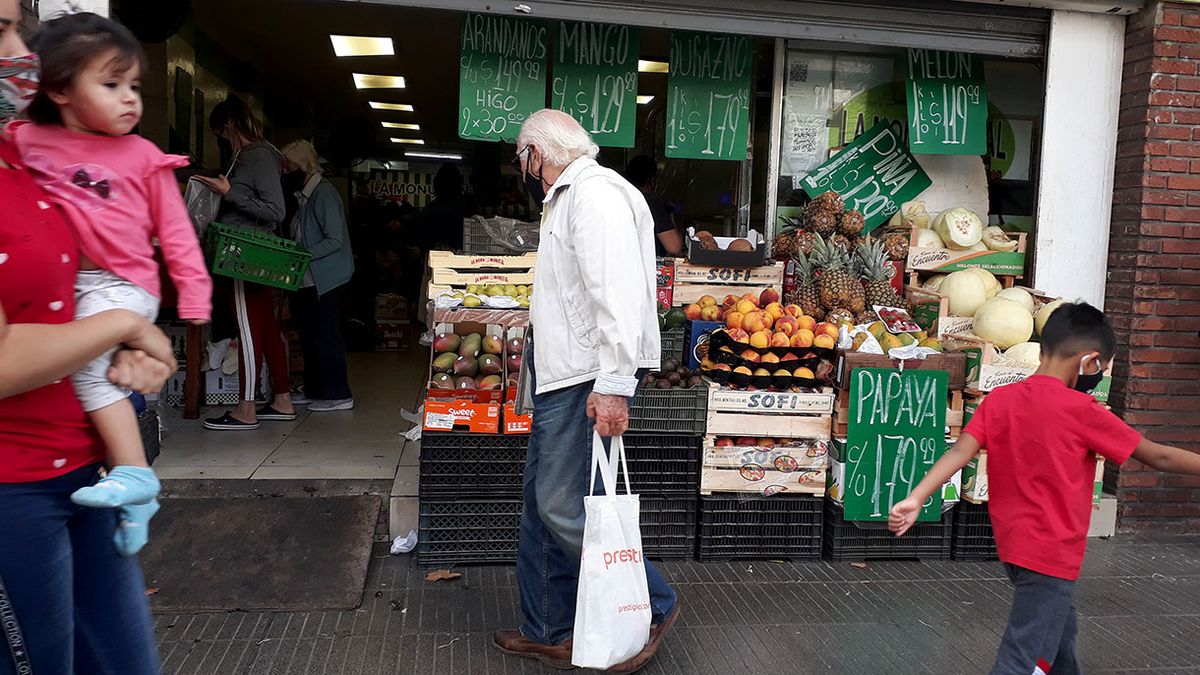According to him Price Index at Origin and Destination (IPOD) prepared by the Regional Economies sector of the Argentine Confederation of Medium Enterprises (CAME)in August the prices of agri-food They multiplied by 3.5 times from the field (origin) to the gondola (destination). That is, the consumer paid $3.5 for every $1 the producer received. In a product, the difference It became up to 11 times more.
On average, the producer’s participation explained 24.7% of the final sales prices. The greatest participation was had by the producers of Strawberry (60.8%), while the lowest was for those of lemon (9.1%).
With respect to other fruit and vegetable products, and due to lower supply and quality, the producer accounted for 35.9% of the shelf price of the pumpkin; 35.8% of pepper; he 34.7% ofthe dad and 29.4% of round tomato; data that correspond to the Consumer Price Index (CPI) for August, which indicated the “Food and non-alcoholic beverages” segment as the one with the greatest increase of the month, highlighting the increase in vegetables and tubers, among others.
unnamed.png
Food: which are the products with the biggest gaps
He lemon (11 times), the carrot (8,9), the zucchini (8.6), the orange (7.3) and the onion (7.2), were the five products that presented the greatest difference between origin and destination prices.
For the fifth consecutive month, the lemon It was the food with the greatest gap between the producer and the consumer. Their prices increased 6.7% at destination, while at origin they had an increase of 20.3%, due to a slight price recovery after the drought. That is, despite the fact that the field-gondola difference continues to decline (from 12.3 times in July to 11 in August), lemon continues to be the product with greater disparity between both ends of the value chain.
With respect to carrot, their prices fell both to the producer (7.3%) – due to low quality of the harvest in Mendoza, as a result of the drought – and to the consumer (5.2%). He zucchinifor its part, also showed a decrease in gondola prices (9.1%), but at origin no variations were recorded.
Another was the behavior of the orange, where a monthly increase of 12.7% was observed at origin – due to price adjustments – and 21.8% at destination; and of the onionwith a price increase of 6.1% at origin and 6.6% at the shelf.
Food: which are the products with the smallest gaps
Among the products they presented minor difference Between the price that the producer received and that paid by the consumer are two of animal origin and three of fruit and vegetable origin.
In the case of the eggs (2.1 times) and the chicken (2.6), they generally have integrated production systems, which means that all actors in their respective value chains are part of the business risk. While eggs registered an increase of 24.8% at origin and 29.7% at destination, chicken increased 26.7% to the producer and 23% to the consumer. Both increases at origin respond to an update in prices.
He pepper and the pumpkin, for their part, also increased at both ends of the chain: 31.6% and 2.8% at origin and 102.3% and 4.2% at destination, respectively. In the particular case of pepper, the increase in producer prices responds to an increase in the quality of Salta’s production and a decrease in supply destined for the domestic market, since trucks from markets concentrating neighboring countries like Paraguay buy a large part of the production.
To finish, the Strawberrythe only fruit that was among the products with the lowest IPOD gaps in the month of August, showed another behavior: its prices decreased both at origin (2.6%) and at destination (3.3%).
Source: Ambito




